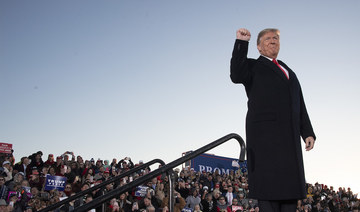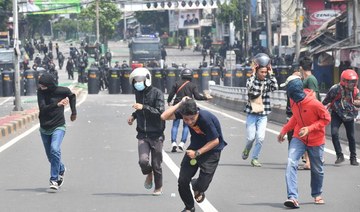LONDON: Katie Jones sure seemed plugged into the Washington’s political scene. The 30-something redhead boasted a job at a top think tank and a who’s-who network of pundits and experts, from the centrist Brookings Institution to the right-wing Heritage Foundation. She was connected to a deputy assistant secretary of state, a senior aide to a senator and the economist Paul Winfree, who is being considered for a seat on the Federal Reserve.
But Katie Jones doesn’t exist, The Associated Press has determined. Instead, the persona was part of a vast army of phantom profiles lurking on the professional networking site LinkedIn.
Experts who reviewed the Jones profile’s LinkedIn activity say it’s typical of espionage efforts on the professional networking site, whose role as a global Rolodex has made it a powerful magnet for spies.
“It smells a lot like some sort of state-run operation,” said Jonas Parello-Plesner, who serves as program director at the Denmark-based think tank Alliance of Democracies Foundation and was the target several years ago of an espionage operation that began over LinkedIn .
William Evanina, director of the US National Counterintelligence and Security Center, said foreign spies routinely use fake social media profiles to home in on American targets — and accused China in particular of waging “mass scale” spying on LinkedIn.
“Instead of dispatching spies to some parking garage in the USto recruit a target, it’s more efficient to sit behind a computer in Shanghai and send out friend requests to 30,000 targets,” he said in a written statement.
Last month, retired CIA officer Kevin Mallory was sentenced to 20 years in prison for passing details of top secret operations to Beijing, a relationship that began when a Chinese agent posing as a recruiter contacted him on LinkedIn.
Unlike Facebook’s friends-and-family focus, LinkedIn is oriented toward job seekers and headhunters, people who routinely fire out resumes, build vast webs of contacts and pitch projects to strangers. That connect-them-all approach helps fill the millions of job openings advertised on the site, but it also provides a rich hunting ground for spies. And that has Western intelligence agencies worried.
British , French and German officials have all issued warnings over the past few years detailing how thousands of people had been contacted by foreign spies over LinkedIn.
In a statement, LinkedIn said it routinely took action against fake accounts, yanking thousands of them in the first three months of 2019. It also said “we recommend you connect with people you know and trust, not just anyone.”
The Katie Jones profile was modest in scale, with 52 connections. But those connections had enough influence that they imbued the profile with credibility to some who accepted Jones’ invites. The AP spoke to about 40 other people who connected with Jones between early March and early April of this year, many of whom said they routinely accept invitations from people they don’t recognize.
“I’m probably the worst LinkedIn user in the history of LinkedIn,” said Winfree, the former deputy director of President Donald Trump’s domestic policy council, who confirmed connection with Jones on March 28.
Winfree, whose name came up last month in relation to one of the vacancies on the Federal Reserve Board of Governors, said he rarely logs on to LinkedIn and tends to just approve all the piled-up invites when he does.
“I literally accept every friend request that I get,” he said.
Lionel Fatton, who teaches East Asian affairs at Webster University in Geneva, said the fact that he didn’t know Jones did prompt a brief pause when he connected with her back in March.
“I remember hesitating,” he said. “And then I thought, ‘What’s the harm?’“
Parello-Plesner noted that the potential harm can be subtle: Connecting to a profile like Jones’ invites whoever is behind it to strike up a one-on-one conversation, and other users on the site can view the connection as a kind of endorsement.
“You lower your guard and you get others to lower their guard,” he said.
The Jones profile was first flagged by Keir Giles, a Russia specialist with London’s Chatham House think tank. Giles was recently caught up in an entirely separate espionage operation targeting critics of the Russian antivirus firm Kasperky Lab. So when he received an invitation from Katie Jones on LinkedIn he was suspicious.
She claimed to have been working for years as a “Russia and Eurasia fellow” at the Center for Strategic and International Studies in Washington, but Giles said that, if that were true, “I ought to have heard of her.”
CSIS spokesman Andrew Schwartz told the AP that “no one named Katie Jones works for us.”
Jones also claimed to have earned degrees in Russian studies from the University of Michigan, but the school said it was “unable to find anyone by this name earning these degrees from the university.”
The Jones account vanished from LinkedIn shortly after the AP contacted the network seeking comment. Messages sent to Jones herself, via LinkedIn and an associated AOL email account, went unreturned.
Several experts contacted by the AP said Jones’ profile picture appeared to have been created by a computer program.
“I’m convinced that it’s a fake face,” said Mario Klingemann, a German artist who has been experimenting for years with artificially generated portraits and says he has reviewed tens of thousands of such images. “It has all the hallmarks.”
Klingemann and other experts said the photo — a closely cropped portrait of a woman with blue-green eyes, copper-colored hair and an enigmatic smile — appeared to have been created using a family of dueling computer programs called generative adversarial networks, or GANs, that can create realistic-looking faces of entirely imaginary people. GANs, sometimes described as a form of artificial intelligence, have been the cause of increasing concern for policymakers already struggling to get a handle on digital disinformation. On Thursday, US lawmakers are due to hold their first hearing devoted primarily to the threat of artificially generated imagery .
Hao Li, who directs the Vision of Graphics Lab at the University of Southern California’s Institute for Creative Technologies, reeled off a list of digital tells that he believes show the Jones photo was created by a computer program, including inconsistencies around Jones’ eyes, the ethereal glow around her hair and smudge marks on her left cheek.
“This is a typical GAN,” he said. “I’ll bet money on it.”
__
Online:
Test your ability to tell a real face from a fake one at: http://www.whichfaceisreal.com/
Generate your own deepfake faces at: https://thispersondoesnotexist.com
Spy used AI-generated face to connect with targets, says expert
Spy used AI-generated face to connect with targets, says expert
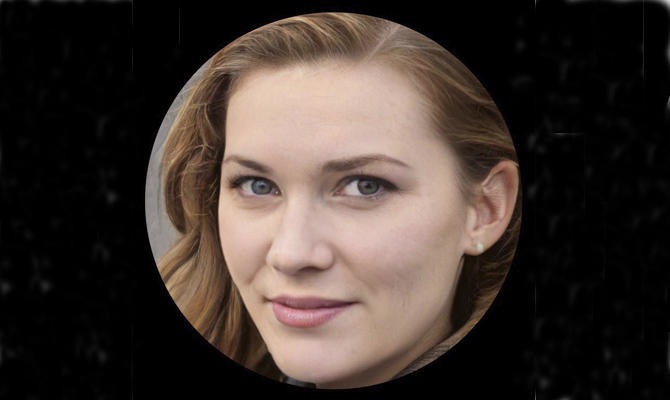
- US counterintelligence official says foreign spies routinely use fake social media profiles to home in on American targets
- Accused China in particular of waging “mass scale” spying on LinkedIn
Several Google employees fired, arrested after ‘Googlers Against Genocide’ sit-in protests
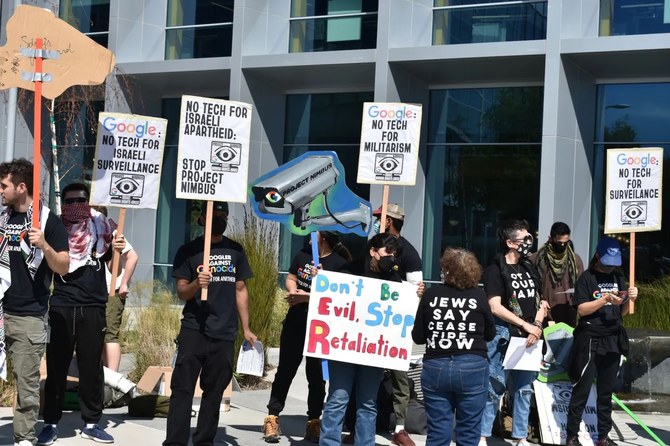
- Outrage over tech giant’s $1.2bn Project Nimbus contract with the Israeli military
- Affiliated group No Tech for Apartheid condemns decision as a flagrant act of retaliation
LONDON: A number of Google employees have lost their jobs and nine have been arrested following protests against the tech giant’s $1.2bn Project Nimbus contract with the Israeli military.
The demonstrations, organized by Googlers Against Genocide and associated with the group No Tech for Apartheid, involved a 10-hour sit-in at Google’s sites in New York City and Sunnyvale, California.
The protesters occupied the office of Google Cloud CEO Thomas Kurian in California, prompting police intervention.
“Physically impeding other employees’ work and preventing them from accessing our facilities is a clear violation of our policies and completely unacceptable behavior,” the company said in a statement.
It added the decision to terminate the employees’ contracts was taken following individual case investigations and that the company would continue to take action as necessary.
In a statement on Medium, Google workers affiliated with the No Tech for Apartheid campaign called the decision to terminate the 28 employees a “flagrant act of retaliation” and said staff members who did not directly participate in Tuesday’s protests were among those who lost their jobs.
“Despite Google’s attempts to silence us and disregard our concerns, we will persist,” said Jane Chung, spokesperson for the protesters.
Announced by Google and Amazon in 2021, Project Nimbus has faced criticism for providing advanced AI and machine-learning capabilities to Israel’s government.
Amid the ongoing conflict, No Tech for Apartheid launched a petition urging both companies to cancel the project, alleging complicity in Gaza’s ethnic cleansing.
Google’s statement said the Nimbus contract was “not directed at highly sensitive, classified or military workloads relevant to weapons or intelligence services.”
Sources have also indicated that both Google and Amazon are bound by stringent contractual obligations that prevent them yielding to boycott pressure, effectively trapping them in the current situation.
The protests come in the wake of allegations that Google is silencing pro-Palestinian voices.
One of the fired workers protested during a presentation by Google’s Israel managing director in New York City.
Employees have demanded that the company stop “the harassment, intimidation, bullying, silencing, and censorship of Palestinian, Arab, and Muslim Googlers.”
They have also demanded that Google address “health and safety issues” in the workplace, which arose from the “mental health consequences of working at a company that is using their labor to enable a genocide.”
Palestinian photojournalist Motaz Azaiza joins Time Magazine’s list of 100 most influential people
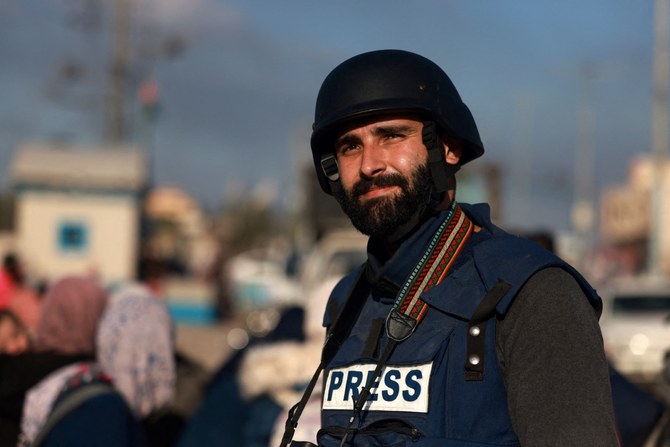
- Azaiza honored in “Icons” category for his work documenting the conflict in Gaza
LONDON: Palestinian photojournalist Motaz Azaiza has been named one of the “100 Most Influential People of 2024” by Time Magazine.
Azaiza was recognized in the “Icons” category for his work documenting the conflict in Gaza, with his photographs offering a rare insight into the realities faced by those living in the enclave.
“For 108 days, Motaz Azaiza acted as the world’s eyes and ears in his native Gaza. Armed with a camera and a flak jacket marked ‘Press,’ the 25-year-old Palestinian photographer spent nearly four months documenting life under Israeli bombardment,” the magazine’s entry description said.
Azaiza’s images offer a perspective rarely seen in international media, given Israel’s ban on foreign journalists entering Gaza.
The photographer took to social media after the announcement, saying the honor symbolizes more than just his individual achievements.
“I am really blessed to share my country name with me wherever I go or whatever I achieve,” he wrote on X.
The Palestinian Photographer..
— MoTaz (@azaizamotaz9) April 17, 2024
I am really blessed to share my country name with me wherever I go or whatever I achieve
For those who don’t recognize Palestine as a state, or for those who claim that it is their land.
Palestine gonna be free one day from Zionists and occupation.… https://t.co/1tqmxwahOP
During his time in Gaza, Azaiza captured images showing the destruction wrought by the conflict, and the resilience of its people.
His photographs, shared with over 18 million followers on Instagram, served as a crucial source of information, despite the risks involved.
Since leaving Gaza in January and relocating to Doha, Azaiza has continued to call for greater awareness of the crisis, and international intervention to halt the conflict.
“What is happening in Gaza is not content for you,” he was quoted as saying by the magazine. “We are not telling you what is happening … for your likes or views or shares. No, we are waiting for you to act. We need to stop this war.”
Since 1999, Time Magazine has published its annual Time 100 list, recognizing influential individuals in various fields.
Others who made this year’s list include singer Dua Lipa, Japanese animator Hayao Miyazaki, American footballer Patrick Mahomes, Formula One driver Max Verstappen and Qatar’s Prime Minister Mohammed bin Abdulrahman Al-Thani.
In November 2023, GQ Middle East named Azaiza as its Man of the Year, underscoring his role in inspiring positive change.
Azaiza’s nomination for the Time 100 list was submitted by Yasmeen Serhan, a staff writer at Time Magazine.
Gaza’s Mohammed Salem wins World Press Photo of the Year award with haunting image of woman cradling dead niece

- Picture was taken on Oct. 17, at Nasser hospital in southern Gaza, where families searched for relatives killed during Isralei bombing
- ‘I hope photo makes world more conscious of the human impact of war, especially on children,’ Salem said
AMSTERDAM: Reuters photographer Mohammed Salem won the prestigious 2024 World Press Photo of the Year award on Thursday for his image of a Palestinian woman cradling the body of her five-year-old niece in the Gaza Strip.
The picture was taken on Oct. 17, 2023, at Nasser hospital in Khan Younis in southern Gaza, where families were searching for relatives killed during Israeli bombing of the Palestinian enclave.
Salem’s winning image portrays Inas Abu Maamar, 36, sobbing while holding Saly’s sheet-clad body in the hospital morgue.
“Mohammed received the news of his WPP award with humility, saying that this is not a photo to celebrate but that he appreciates its recognition and the opportunity to publish it to a wider audience,” Reuters’ Global Editor for Pictures and Video, Rickey Rogers, said at a ceremony in Amsterdam.
“He hopes with this award that the world will become even more conscious of the human impact of war, especially on children,” Rogers said, standing in front of the photo at the Nieuwe Kerk in the Dutch capital.
Announcing its annual awards, the Amsterdam-based World Press Photo Foundation said it was important to recognize the dangers facing journalists covering conflicts.
It said 99 journalists and media employees had been killed covering the war between Israel and Hamas since the Palestinian militant group attacked southern Israel on Oct. 7 and Israel responded by launching a military offensive in Gaza.
“The work of press and documentary photographers around the world is often done at high risk,” said Joumana El Zein Khoury, the organization’s executive director.
“This past year, the death toll in Gaza pushed the number of journalists killed to a near-record high. It is important to recognize the trauma they have experienced to show the world the humanitarian impact of the war.”
Salem, a Palestinian aged 39, has worked for Reuters since 2003. He also won an award in the 2010 World Press Photo competition.
The jury said Salem’s 2024 winning image was “composed with care and respect, offering at once a metaphorical and literal glimpse into unimaginable loss.”
“I felt the picture sums up the broader sense of what was happening in the Gaza Strip,” Salem said when the image was first published in November.
“People were confused, running from one place to another, anxious to know the fate of their loved ones, and this woman caught my eye as she was holding the body of the little girl and refused to let go.”
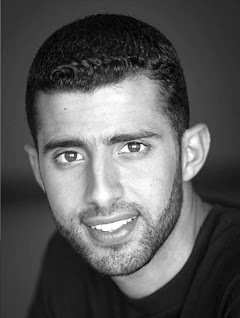
’PROFOUNDLY AFFECTING’
Salem’s wife had given birth to their child days before he took the shot.
The photograph is “profoundly affecting,” said jury member Fiona Shields, head of photography at Guardian News & Media.
The jury selected the winning photos from 61,062 entries by 3,851 photographers from 130 countries.
GEO photographer Lee-Ann Olwage of South Africa won the story of the year category with images documenting dementia in Madagascar.
The long-term projects category was won by Alejandro Cegarra of Venezuela for the series “The Two Walls” for The New York Times/Bloomberg.
Ukrainian photographer Julia Kochetova won the open format award with “War is Personal,” which documented the war in her country by weaving together pictures, poetry, audio and music in documentary style.
Arab League, OIC Islamic Broadcasting Union sign media protocol
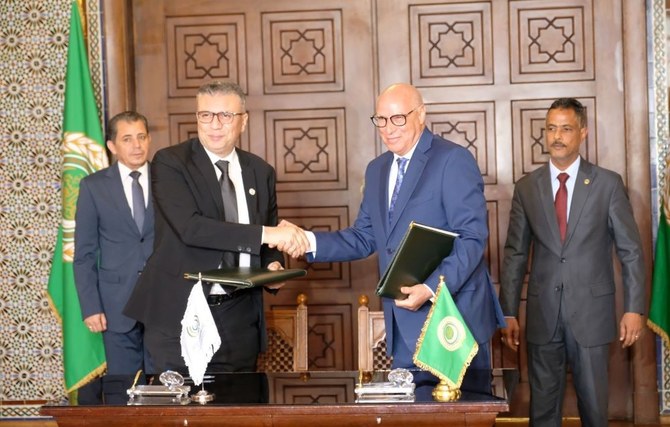
- Protocol encompasses various areas of collaboration, and focuses on training and capacity building in media and journalism
- Ambassador Ahmed Rashid Khattabi expressed optimism that the collaboration will contribute to promoting values of tolerance and moderation
CAIRO: The Arab League said that a media cooperation protocol will be signed between its Secretariat’s Media and Communication Sector and the OIC Islamic Broadcasting Union.
The Arab League added that “as part of efforts to cement ties between the General Secretariat of the League of Arab States and the Organization of Islamic Cooperation (OIC) Radio and Television Union, and in line with the General Secretariat’s commitment to fostering relations with regional and international organizations, a cooperation protocol will be signed between the General Secretariat’s Media and Communication Sector and the OIC Islamic Broadcasting Union.”
The protocol encompasses various areas of collaboration, and focuses on training and capacity building in media and journalism. It aims to bolster media exchange between the League of Arab States and the OIC, facilitate the sharing of expertise and knowledge in media practices, organize joint media initiatives, and conduct specialized training courses and workshops.
Ambassador Ahmed Rashid Khattabi, assistant secretary-general and head of the Media and Communication Sector, said that the protocol shows the commitment of both organizations to advancing professional cooperation.
He highlighted the importance of aligning with rapid technological advancements to meet the evolving needs of both entities.
Khattabi commended the significance of this protocol, stressing the vital role of intensified media cooperation between Arab and Islamic nations.
He expressed optimism that the collaboration will contribute to promoting values of tolerance and moderation, while rejecting extremism, and fostering deeper media and cultural exchanges.
The signing ceremony will take place at the headquarters of the General Secretariat of the League of Arab States in Cairo.
In response to the secretary-general’s directive, Khattabi will sign the cooperation protocol on behalf of the General Secretariat of the League of Arab States. Amr Ellissy, president of the OIC Radio and Television Union, will sign on behalf of the union.
Social media platform X blocked in Pakistan over national security, ministry says
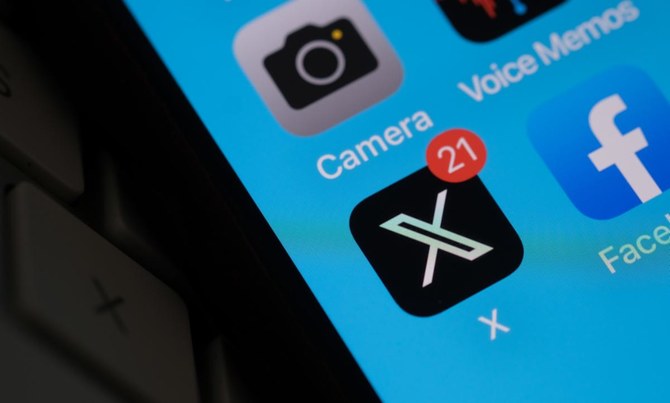
- Ministry accuses X of failing to address its concerns, says ban was in ‘interest of upholding national security’
- X has been blocked since country election in February, with activities critizing ban aims to stifle democratic accountability
ISLAMABAD: Pakistan’s interior ministry said on Wednesday it had blocked access to social media platform X around the time of February’s election on national security concerns, confirming a long-suspected shutdown.
Users in Pakistan have reported problems using X, formerly known as Twitter, since mid-February, but the government had made no official announcement on the matter until now.
The interior ministry mentioned the shutdown in a written submission to Islamabad High Court on Wednesday. Another court has told the government to reconsider the ban within a week, said Abdul Moiz Jafri, a petitioner and advocate.
“It is very pertinent to mention here that the failure of Twitter/X to adhere to the lawful directives of the government of Pakistan and address concerns regarding the misuse of its platform necessitated the imposition of a ban,” the ministry said in its court submission, which was seen by Reuters.
It said X had been reluctant to resolve the issue. X did not immediately respond to a Reuters request for comment on Wednesday.
“The decision to impose a ban on Twitter/X in Pakistan was made in the interest of upholding national security, maintaining public order, and preserving the integrity of our nation,” the ministry report said.
Access to X has remained limited since the Feb. 8 national election, which the party of jailed former prime minister Imran Khan says was rigged.
KHAN’S PARTY IS BIG USER OF X
Among Pakistan’s political parties, Khan’s party is the most prolific user of social media platforms, particularly after the country’s traditional media began censoring news about the ex-cricket star and his party ahead of the polls. Khan has over 20 million followers on X, making him the most followed Pakistani.
Khan says Pakistan’s military was behind his ouster as prime minister in 2022 and that it helped his opponents form the current government, despite candidates backed by his party winning most seats in February’s election. The military denies this charge.
He remains in jail on a number of convictions, most of which came days before the election.
Many government officials in Pakistan, notably Prime Minister Shehbaz Sharif, continue to use X — most likely through VPN software that bypasses the blocks.
The decision to temporarily block X was taken after considering confidential reports from Pakistan’s intelligence and security agencies, the ministry report said.
It said “hostile elements operating on Twitter/X have nefarious intentions to create an environment of chaos and instability, with the ultimate goal of destabilising the country and plunging it into some form of anarchy.”
Rights groups and marketing advertisers have raised concerns.
Digital rights activist Usama Khilji said the block on X seemed designed to hinder the democratic accountability which he said a platform with instant updates of real-time information enables, especially amid the allegations and evidence of rigging which surfaced following the election.
Marketing consultant Saif Ali said: “It has become nearly impossible to convince Pakistani advertisers to invest in Twitter for brand communications, due to the platform being throttled by governmental authorities.”



